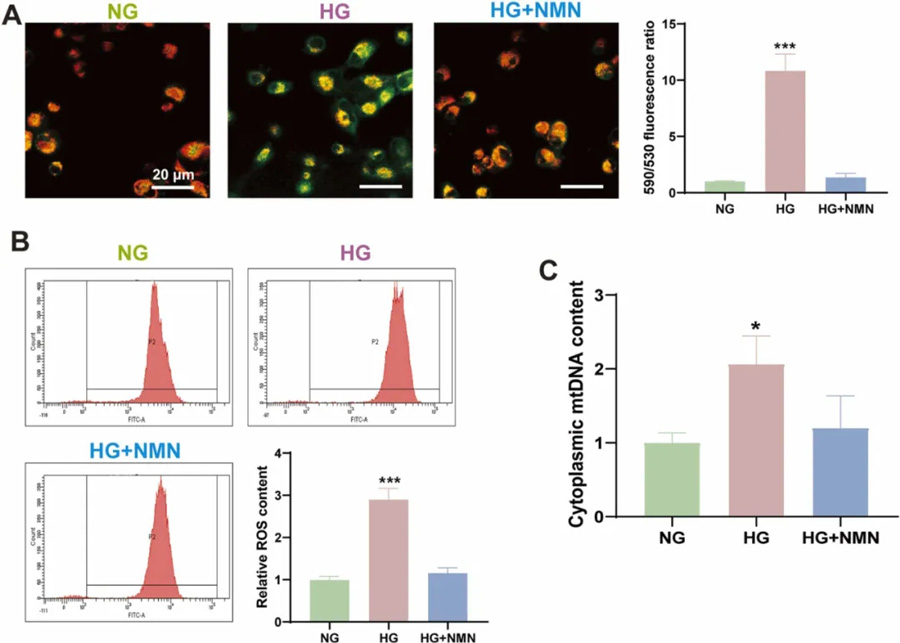NMN can protect human corneal epithelial cells with high glucose, improve survival rate, improve mitochondrial function, promote migration, inhibit apoptosis, and restore tight connections, providing a new idea for the treatment of diabetes-related keratopathy.
Diabetes mellitus (DM), as an increasingly common metabolic disease worldwide, has a serious impact on the quality of life of patients.
Corneal epithelial cell injury is one of the common eye complications in diabetic patients, the main manifestations are:
Corneal epithelial squamous metaplasia, abnormal or delayed wound healing and so on.
In severe cases, persistent corneal injury may trigger recurrent epithelial erosion and keratopathy.
A study published in Biomedicine & Pharmacotherapy explores the protective effect of niacinamide mononucleotide (NMN) on human corneal epithelial cells (HCECs) in a high-glucose (HG) environment, providing a new idea for the treatment of diabetes-related keratopathy.

NMN enhances the activity of human corneal epithelial cells
Studies have found that a high-sugar environment significantly reduces the viability of human corneal epithelial cells.
When NMN was added, the cell viability was significantly improved.
Nicotinamide Mononucleotide improves the viability of human corneal epithelial cells by reducing cell damage, decreasing apoptosis rate, enhancing cell migration and restoring tight connections between cells.
These effects suggest that NMN has a protective effect on human corneal epithelial cells against the adverse effects caused by a high glucose environment.

NMN improves mitochondrial function in human corneal epithelial cells
Since mitochondrial dysfunction is one of the key pathological mechanisms of high-sugar-induced human corneal epithelial cell injury, the researchers analyzed the effects of NMN on mitochondrial membrane potential MMP, intracellular ROS, and cytoplasmic mtDNA.
The results showed that the study of high glucose environment led to the decrease of MMP, the increase of intracellular ROS content and the increase of cytoplasmic mtDNA content in human corneal epithelial cells, and NMN treatment could significantly improve these abnormalities.
These results suggest that NMN alleviates the damage of human corneal epithelial cells caused by high glucose environment by improving mitochondrial function.

NMN restores the migration ability of human corneal epithelial cells
Since the reduced migration ability of human corneal epithelial cells is a direct mechanism of delayed corneal epithelial wound healing in diabetic patients, the researchers also investigated the effect of NMN on high-sugar-induced human corneal epithelial cell dysfunction.
Experiments have shown that the migration ability of human corneal epithelial cells impaired, the apoptosis rate increased, the cell senescence accelerated, and the secretion of pro-inflammatory cytokines increased in diabetic environment.
Treatment with NMN significantly reversed these changes, restored the migration ability of human corneal epithelial cells, reduced the apoptosis rate, reduced the expression of cell aging markers, and inhibited the secretion of pro-inflammatory cytokines, thus alleviating the negative effects of high glucose environment on human corneal epithelial cells.
Sum up
This study confirmed the protective effect of NMN on human corneal epithelial cells in high glucose environment through in vitro experiments.
In other words, NMN can improve the survival rate of human corneal epithelial cells, improve mitochondrial function, promote cell migration and inhibit apoptosis, while restoring the tight junction level.
These findings reveal the potential therapeutic role of NMN in diabetes-associated keratopathy and provide a theoretical basis for further clinical research.



